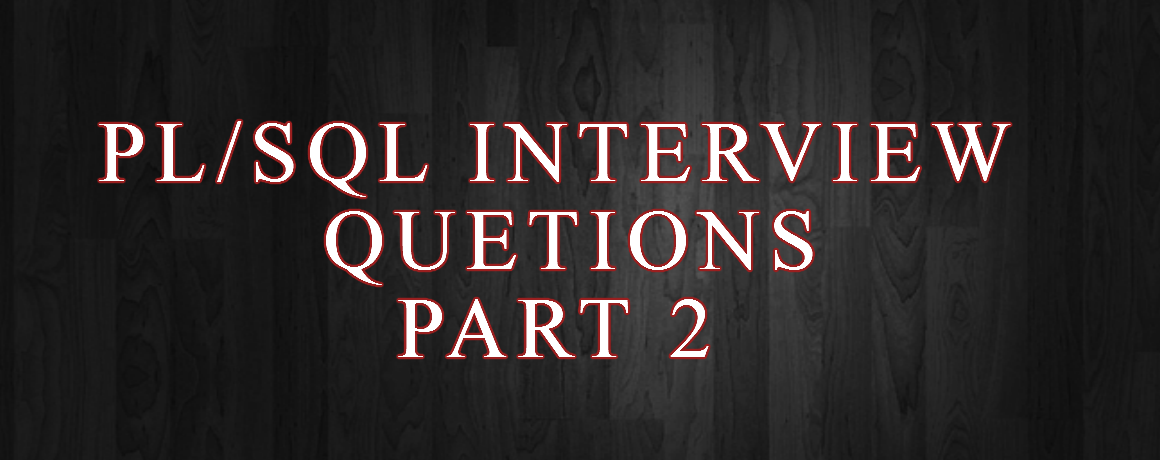Oracle ACE Pro
Oracle Solution Architect
Oracle E-Business Suite
Oracle Cloud Infrastructure
Oracle Fusion Middleware
Oracle Database Administration
Oracle Weblogic Administration
Oracle ACE Pro
Oracle Solution Architect
Oracle E-Business Suite
Oracle Cloud Infrastructure
Oracle Fusion Middleware
Oracle Database Administration
Oracle Weblogic Administration
Month: June 2017
Providing Limited Patch Wizard Access to EBS End-Users
Patch Wizard helps you identify useful or critical missing patches for your EBS environment.
One of the most common questions we get is how to provide Patch Wizard access to end-users without giving them full access to the rest of the system administration features included with the System Administration responsibility.
In response to these questions, we created a responsibility for Non-Sysadmin users that contains only the Patch Wizard screens. Tips on using this new responsibility are covered here:
- Patch Wizard FAQ (Note 976688.2) – see tab “Setup Patch Wizard Responsibility for End Users”

This Note shows how to create a new Patch Wizard responsibility for end-users, how to configure preferences and how to add restrictions for specific menus and functions.
References
Related Articles
- Patch-Related Enhancements in Release 12
- New Video Primers on EBS Patch Wizard Now Available
- New Patch Wizard for EBS 12.1 Now Available
Source:https://blogs.oracle.com/stevenchan/setup-patch-wizard-responsibility-for-end-users-v2
1. What is PL/SQL?
- PL/SQL stands for procedural language extension to SQL.
- It supports procedural features of programming language and SQL both.
- It was developed by Oracle Corporation in early of 90’s to enhance the capabilities of SQL.
2. What is the purpose of using PL/SQL?
- PL/SQL is an extension of SQL.
- While SQL is non-procedural, PL/SQL is a procedural language designed by Oracle.
- It is invented to overcome the limitations of SQL.
3. What are the most important characteristics of PL/SQL?
A list of some notable characteristics:
- PL/SQL is a block-structured language.
- It is portable to all environments that support Oracle.
- PL/SQL is integrated with the Oracle data dictionary.
- Stored procedures help better sharing of application.
4. What is PL/SQL table? Why it is used?
- Objects of type tables are called PL/SQL tables that are modeled as database table.
- We can also say that PL/SQL tables are a way to providing arrays.
- Arrays are like temporary tables in memory that are processed very quickly.
- PL/SQL tables are used to move bulk data.
- They simplifies moving collections of data.
5. What are the datatypes available in PL/SQL?
There are two types of datatypes in PL/SQL:
- Scalar datatypes Example are NUMBER, VARCHAR2, DATE, CHAR, LONG, BOOLEAN etc.
- Composite datatypes Example are RECORD, TABLE etc.
6. What is the basic structure of PL/SQL?
PL/SQL uses BLOCK structure as its basic structure.
Each PL/SQL program consists of SQL and PL/SQL statement which form a PL/SQL block.
PL/SQL block contains 3 sections.
- The Declaration Section (optional)
- The Execution Section (mandatory)
- The Exception handling Section (optional)
8. What is exception? What are the types of exceptions?
Exception is an error handling part of PL/SQL.
There are two type of exceptions: pre_defined exception and user_defined exception.
9. How to write a single statement that concatenates the words ?Hello? and ?World? and assign it in a variable named Greeting?
Greeting := ‘Hello’ || ‘World’;
10. Does PL/SQL support CREATE command?
No, PL/SQL doesn’t support the data definition commands like CREATE.
11. Write a unique difference between a function and a stored procedure.
A function returns a value while a stored procedure doesn’t return a value.
12. How exception is different from error?
- Whenever an Error occurs Exception arises.
- Error is a bug whereas exception is a warning or error condition.
13. What is the main reason behind using an index?
By using an Index we can access data blocks Faster in the table.
14. What are PL/SQL exceptions? Tell me any three.
- Too_many_rows
- No_Data_Found
- Value_error
- Zero_error etc.
15. How do you declare a user-defined exception?
You can declare the User defined exceptions under the DECLARE section, with the keyword EXCEPTION.
Syntax:
<exception_name> EXCEPTION;
1. What are Procedure, functions and Packages?
- Procedures and functions consist of set of PL/SQL statements that are grouped together as a unit to solve a specific problem or perform set of related tasks.
- Procedures do not return values while Functions return one Value.
- Packages provide a method of encapsulating and storing related procedures, functions, variables and other Package Contents
2.What is a ROWID and Why does it needed?
ROWID is the physical address (location) of the row on the disk. This is the fastest way to access a row in a table.
3.How many types of SQL Statements are there in Oracle?
There are 6 types of SQL statements.
Data Definition Language (DDL): The DDL statements define and maintain objects and drop objects.
Data Manipulation Language (DML): The DML statements manipulate database data.
Transaction Control Statements: Manage change by DML.
Session Control: Used to control the properties of current session enabling and disabling roles.
System Control Statements: Change Properties of Oracle Instance.
Embedded SQL: Incorporate DDL, DML and T.C.S in Programming Language.
4.How many Integrity Rules are there and what are they?
There are Three Integrity Rules as follows:
Entity Integrity Rule: The Entity Integrity Rule enforces that the Primary key cannot be Null.
Foreign Key Integrity Rule: The FKIR denotes that the relationship between the foreign key and the primary key has to be enforced. When there is data in Child Tables the Master tables cannot be deleted.
Business Integrity Rules: The Third Integrity rule is about the complex business processes which cannot be implemented by the above 2 rules.
5.How to implement the If statement in the Select Statement?
We can implement the if statement in the select statement by using the Decode statement.
e.g select DECODE (EMP_CAT,’1′,’First’,’2′,’Second’Null);
Here, the Null is the else statement where null is done .
6.How do you use the same LOV for 2 columns?
- We can use the same LOV for 2 columns by passing the return values in global values and using the global values in the code.
7.What are snap shots and views?
- Snapshots are mirror or replicas of tables.
- Views are built using the columns from one or more tables.
- The Single Table View can be updated but the view with multi table cannot be updated.
8.What is the difference between candidate key, unique key and primary key?
- Candidate keys are the columns in the table that could be the primary keys and the primary key is the key that has been selected to identify the rows.
- Unique key is also useful for identifying the distinct rows in the table.
9.What is Row Chaining?
- The data of a row in a table may not be able to fit the same data block.
- Data for row is stored in a chain of data blocks.
10.What is the difference between deleting and truncating of tables?
- Deleting a table will not remove the rows from the table but entry is there in the database dictionary and it can be retrieved.
- While truncating a table deletes it completely and it cannot be retrieved.
11.What is the Difference between a post query and a pre query?
- A post query will fire for every row that is fetched but the pre query will fire only once.
12.How to Delete the Duplicate rows in the table?
We can delete the duplicate rows in the table by using the Rowid
Example: DELETE FROM table_name a Where rowid>(select min(rowid) from table_name b where a.table_no=b.table_no);
13.Can we disable database trigger? How?
Yes we can disable database triggers through following issuing statement
ALTER TABLE TABLE [DISABLE all_trigger ]
14.Is space acquired in blocks or extents?
- Space is acquired in extents.
Can EBS Nodes Be at Different Operating System Levels?
Oddly, a category of EBS architecture questions that I’d thought long-settled is starting to reemerge. I’ve recently seen several queries along the lines of:
- Can EBS database nodes and application tier nodes be on different operating systems?
- Can multiple EBS database nodes be on different operating systems or levels?
- Can multiple EBS application tier nodes be on different operating systems or levels?
Here are the answers to these questions:
1. Can EBS database nodes and application tier nodes be on different operating systems?
Yes. In some cases, the operating systems certified for EBS database nodes cannot be run on the application tier. These are called “database tier only” certifications. It is quite common to see this configuration, especially in large EBS environments.
2. Can multiple EBS database nodes be on different operating systems or levels?
No. From our “Installation Guide: Using Rapid Install” documentation:
“All database tier nodes must be at the same operating system patch level.”
3. Can multiple EBS application tier nodes be on different operating systems or levels?
No. From our “Installation Guide: Using Rapid Install” documentation:
“All application tier nodes must be at the same operating system patch level.”
Here’s a screenshot from our EBS 12.2 documentation (emphasis in red):

References
- Oracle E-Business Suite 12.1 Installation Guide: Using Rapid Install (PDF)
- Oracle E-Business Suite 12.2 Installation Guide: Using Rapid Install (PDF)
Related Articles
Source: https://blogs.oracle.com/stevenchan/can-ebs-nodes-be-at-different-operating-system-levels




